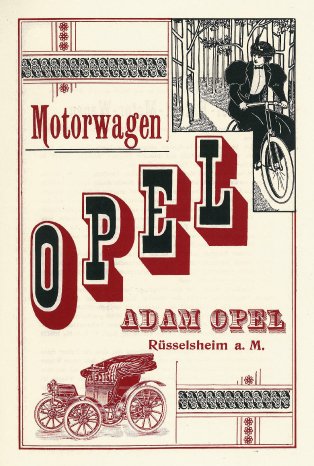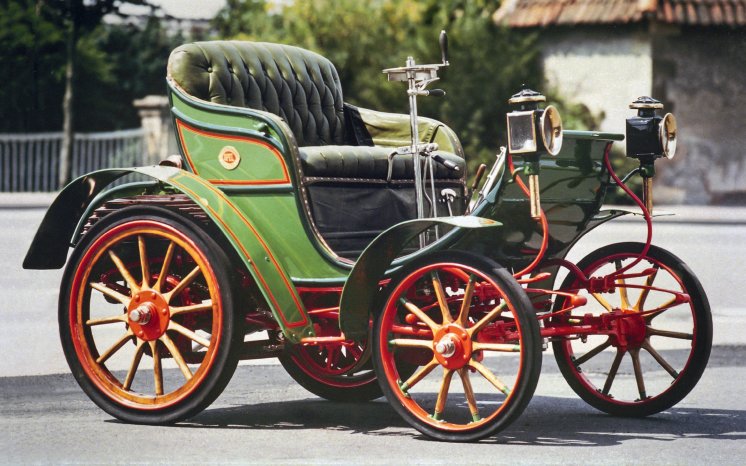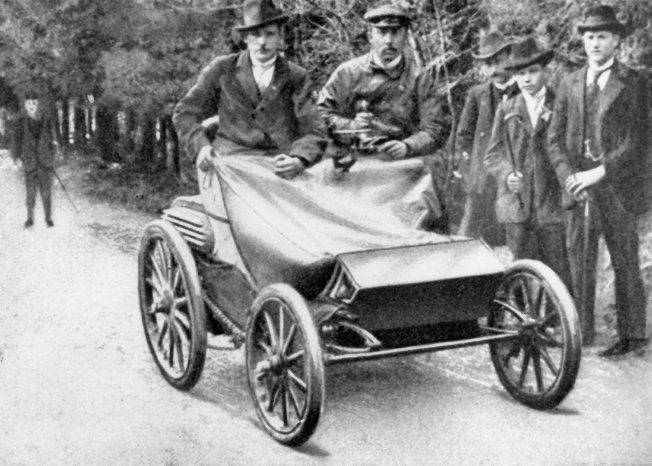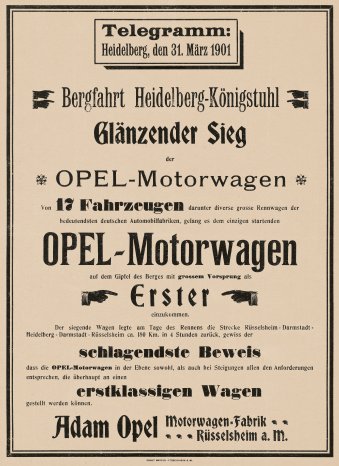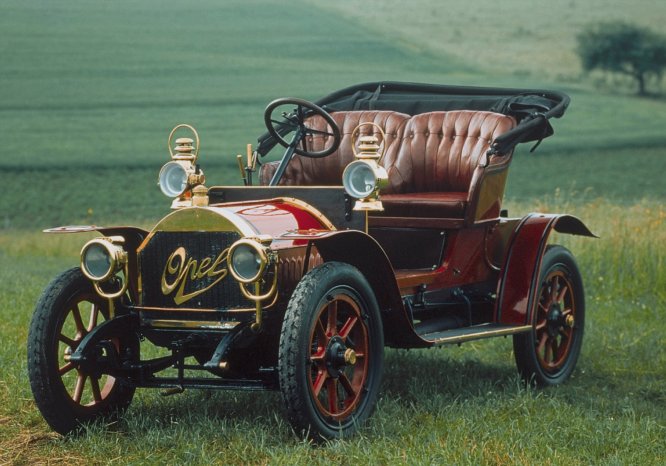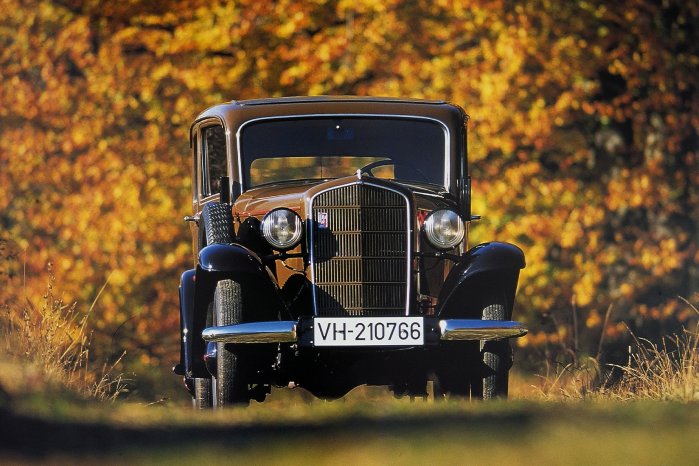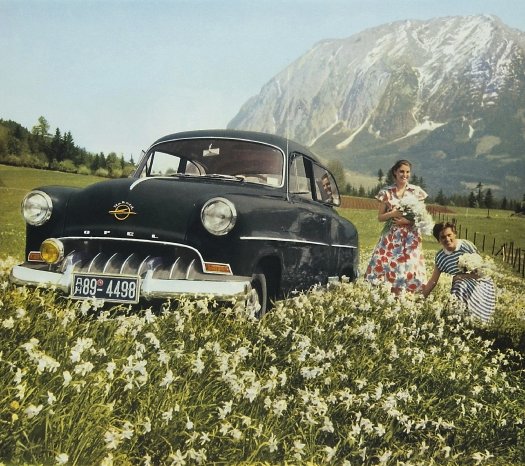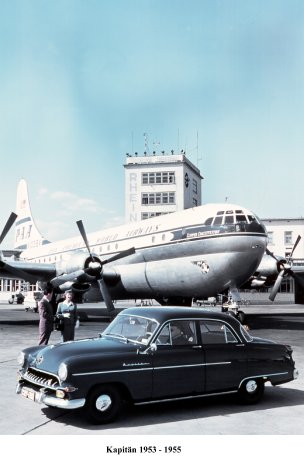- When the horses moved under the bonnet: Opel starts with Patentmotorwagen in 1899
- Mobility for the masses: Doktorwagen, Laubfrosch and Kadett pave the way
- From Lutzmann to Insignia; 120 years of car manufacturing in Rüsselsheim
- Company goal until this very day: Opel democratises technologies
The brand has played a leading role in all segments – models such as the Opel Kadett, Rekord and Kapitän characterised the period of reconstruction and the period of the economic miracle. Stylish icons such as the Opel GT, Manta and Monza then followed. In the 1980s and 1990s models such as Corsa, Astra and Zafira then became bestsellers and symbols of reunification. After the fall of the Berlin Wall and the opening of the plant in Eisenach, Opel became more popular than ever before. The first generation Astra was produced 4.2 million times between 1991 and 1998 making it the most built Opel model ever. Until this very day, the Rüsselsheim-based carmaker is firmly anchored in the centre of society and offers technologies that are normally reserved for expensive premium cars. Innovative solutions such as the IntelliLux LED® matrix light in the compact Astra (Car of the Year 2016) as well as in the Insignia flagship, the AGR-certified active ergonomic seats (available in many carlines) or the extensive array of assistance systems for more safety and comfort (all carlines) are typical for Opel.
From Lutzmann to Doktorwagen: The pioneering years
Opel joins the ranks of the automotive pioneers of the late 19th century that include Daimler, Benz and Peugeot by buying Friedrich Lutzmann’s motor car factory. In the spring of 1899, the first Opel patent motor car “System Lutzmann” is built in Rüsselsheim. Two years later, a converted Lutzmann wins the Heidelberg-Königstuhl “Mountain Race” by beating “16 other vehicles made by well-known German carmakers”. Overall, the development in the automotive industry is fast and furious. While the first models are direct descendants of horse-drawn carriages, Opel launches an ultra-modern small car for an extremely competitive price in 1909. The 4/8 PS Opel Doktorwagen already has an Opel engineered and Opel built 4-cylinder in-line engine. In the adverts, Opel promises that it is ideal for “Doctors, veterinarians and lawyers”. The Doktorwagen is available for prices between 4,000 and 5,000 Mark while many other cars made during this period cost 20,000 Mark. It transforms the motor car from a prestigious toy for the rich and the famous into an affordable mobility solution for a broad audience.
From Laubfrosch to Kadett: Mass mobility
Friedrich – who had since been promoted to chief engineer – and his brother Wilhelm introduce the assembly line production at Opel in 1924. Ford were the first company to introduce this cost-cutting method in America in 1913. Opel always had a keen eye for developments in other countries. Adam Opel became fascinated by the sewing machine during his years of travel in France and later the System Darracq provided a major boost for car manufacturing in Rüsselsheim. The Opel brothers then launch the innovative 4/12 PS “Laubfrosch”. The two-seater with a top speed of 60 km/h is available for 3,900 Goldmark thanks to assembly line production. Later, the “car for everyone” is available for 1,930 Reichsmark. In the following years, an entire vehicle family is created based on the Laubfrosch technology. In total, 119,484 Opel 4 PS models are made until 1931.
What these revolutionary cars are for the 1920s, the Kadett is for the 1930s. Automotive progress is taking huge steps. The Kadett replaces the successful Opel P4 and celebrates its debut with a self-supporting steel body, single-wheel front suspension, 4-cylinder four-stroke engine and hydraulic drum brakes. The prices are well below those of the direct competitors. In 1938, the “normal” Opel Kadett limousine is available for an affordable 1,795 Mark.
The Kadett nameplate is revived in 1962 and Opel ups the ante even further with the Kadett A. While many competitors still rely on two-stroke or air-cooled rear-mounted engine, the newcomers shines with the comfort of a water-cooled 4-cylinder unit, a quiet 4-speed transmissions and body styles ranging from coupé to Caravan.
From Olympia Rekord to the “KAD” models: Prosperity increases
The first all-new Opel after the war is the Olympia Rekord and it sounds in a new era with its ponton-style body and chrome plated shark mouth. The design takes cues from that of large American limousines – and is perfect for the economic miracle that is just beginning. Those who are successful want to show it again. And a new type of vehicle also makes its debut with the Olympia Rekord Caravan – a lifestyle estate for the whole family. An all-new Opel Kapitän arrives in 1954, the Opel Rekord P2 is introduced in 1960 and the Rekord A follows in 1963 with disc brakes and soon afterwards with 6-cylinders. No matter whether as a coupé, estate or limousine – the mid-size Rekord becomes synonymous with the new middle class in the young Federal Republic of Germany. Opel produces 882,433 Rekord A by 1965. This success opens the door for the “big three” and in 1964 the “KAD” – for Kapitän, Admiral and Diplomat – arrive in the luxury class. The second generation of these KAD models can even boast a unique level of driving comfort thanks to the legendary de Dion rear axle. Opel introduces the safety steering column in all passenger car models in 1968. Innovations to help cope with the growing amount of traffic.
From the Opel GT to the Calibra: The new sportiness
Opel becomes the first European manufacturer to open a true, modern design studio in June 1964. And only one year later, the first concept car from a European manufacturer, the Experimental GT, celebrates its debut at the 1965 Frankfurt Motor Show. A further 36 months later, the serial production Opel GT is available from Opel dealers and marks the birth of a sports car legend. The icon is affordable for a broad audience thanks to mass production technology and the GT is the next hit from Rüsselsheim. The company sticks to this approach in the coming years. The Manta shares its technology with the Ascona when it is launched in 1970 and the Calibra “borrows” the Vectra’s technology from 1989. The top-of-the-range variant of the aerodynamics world champion (Cd of 0.26), the Calibra Turbo 4x4 delivers 204 hp and offers the driving performance of sports cars twice its price.
From Corsa to Ampera: Bestsellers and trendsetters
In 1982, Opel made a huge splash with a small car. The Corsa A rounded off the company’s offering by sitting neatly under the Kadett. The Corsa was an impressive display of getting the most out of a small space without compromising on driving pleasure or cost effectiveness. Every single generation of the Corsa (A to E) has driven and continued the democratisation of individual mobility. To date, almost 14 million Corsa have been registered. And next year the next generation will follow adding a new chapter to the story – with a fully electric version of the Corsa.
Just as the Corsa has shaped the small car segment, the Zafira has defined the compact van segment with room for seven since 1999. The third row of seats that disappears entirely under the boot floor is simply a stroke of genius. Owners of models made by competitors have to painstakingly remove the additional heavy seats when the boot space is required. Seven people can easily fit into the 4.32 metre long Zafira. Alternatively, the compact van can double as a transporter in a matter of seconds by folding award the seats and created a 1.56 by 1.15 metre loading area with a total capacity of up to 1,700 litres. The current Zafira is also a master of metamorphosis doubling as a transporter and a lounge on wheels thanks to the Flex7®Plus seating system.
A further trendsetter follows in the footsteps of the Corsa and Zafira after celebrating its world premiere at the 2009 Geneva Motor Show: The Opel Ampera, a car that redefines electro-mobility. The 2012 Car of the Year drives electric and also has its own source of power on board with the range extender. This makes the Ampera just as independent from loading stations as a conventional passenger car. Opel presents the next generation of the electric car at the 2016 Paris Motor Show. The Ampera-e has an all-electric NEDC range of 520 kilometres thanks to its 60 kWh state-of-the-art lithium-ion battery. And the 150 kW/204 hp electric motor gives it sports car-like acceleration. The next electric car from Rüsselsheim will follow next year already and electro-mobility will get another boost with the Corsa-e – out of the niche and on to the road.
From Astra to Insignia: The new efficiency
Opel discovers the new lightness of being with the launch of the current generation Astra in 2015. The compact car weighs up to 200 kilogrammes less than its predecessor did. The engine offering follows the downsizing strategy: with smaller displacement and turbocharging, lower fuel consumption and higher efficiency. For the first time, the Astra is available with a highly efficient 3-cylinder direct injection petrol unit and the revolutionary IntelliLux LED® matrix light. The innovative system turns night into day without glaring other road users – a unique feature in the compact class! The Astra convinces customers and experts alike and is voted “Car of the Year 2016”.
The Insignia A is the first Opel that can recognise traffic signs from 2008 and offers the intelligent AFL+ lighting system. Just like the Astra, the second generation of the Opel flagship has been trimmed for efficiency. The new generation Insignia is lighter, more economic and simultaneously much more spacious. A highlight feature of the Insignia GSi, Country Tourer, Grand Sport and Sports Tourer is the adaptive all-wheel drive with torque vectoring that can accelerate the rear wheels individually in a split-second depending on the driving situation. The Opel Insignia is the first vehicle made by a volume manufacturer to offer this technology in the mid-size segment.
From Mokka to Grandland X: The SUV phenomenon
SUV is the buzzword of the hour in the automotive industry. Customers want to sit a little bit higher to have a better overview and to enjoy the flair of long-distance travel and adventure. Opel recognised this trend at a very early stage and proposed a unique offer in the B-segment. The cool sub-compact Mokka is also available with all-wheel drive and proves to be extremely popular from the very start. It is joined in the compact class by the Crossland X and the Grandland X in 2017. All members of the X-Family are available with the AGR-certified (Aktion Gesunder Rücken e.V.) active seats. Ergonomic and comfortable seats have been a part of the Opel DNA for a long time – 120 years ago the Opel Patentmotorwagen “System Lutzmann” already proudly sported leather upholstery.
